Artists’ Corner Exclusive Interview With Rudy Vogel
Welcome back to our Artists’ Corner section of theappwhisperer.com, this is another totally unique section, that no other website has. Artist’s Corner consists of three key areas. The first area is where we will talk to mobile photography artists about their experiences with submitting images to Galleries. What the process is, how to select the ‘right’ images, costs involved, time, copyright, how to ensure correct color management when printing, how to literally send images safely and of course a lot more. The second area, is where we talk to the Galleries themselves and ask them directly what they are looking for from mobile photography, what they can offer the mobile photographer, time scales, the costs to exhibit, print and mount and much more. The third area will be a ‘live’ area where we ‘follow’ particular artists on their endeavors with creating their images for exhibiting, to contacting the Galleries, to exhibiting, or not as the case may be. Effectively the highs and lows as they experience them.
Today we are talking to Rudy Vogel, an iPhone photography artist with huge experience of submitting images to galleries, the printing processes,costs involved and a multitude of other crucial and critical aspects of displaying and distributing iPhone photography art. We previously interview Rudy in our Day In The Life series as well as our A Pictures Worth, Rudy is an absolutely outstanding iPhone Artist and one we value very highly.
You’re going to love this interview, don’t miss it…
Recognition
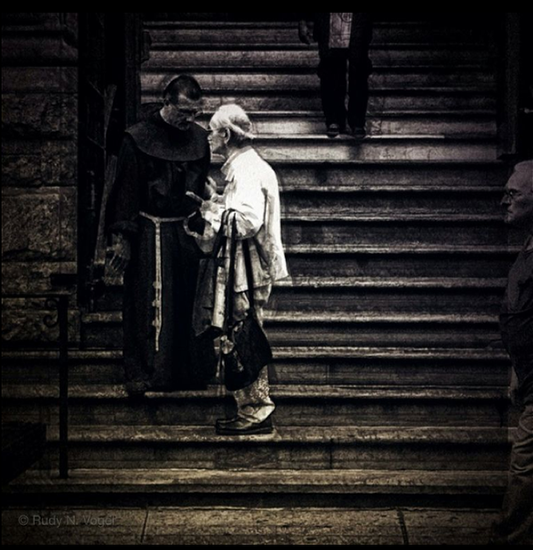
Copyright Image – Rudy Vogel – ‘Quaeritur Publica’ – Apps used: Camera+, Dramatic B&W, iCameraHDR, DynamicLight, SnapFilter, Noir, Blender & Iris
JC – Rudy, where do you submit your work to get noticed?
RV – I believe that the Internet affords artists whether established or emerging new opportunities for exposure, brand development and creating a following that traditional outlets such as galleries cannot muster. That being said, it still is important for one’s artwork to be experienced in a traditional venue so that patrons and/or collectors can see your work as it was meant to be presented. Currently my work can be viewed at the foremost high-art iPhoneography site and artist collective on the planet, pixelsatanexhibtion.com. And, prints of my work from this site are available for sale at p1xels.com. In the bricks & mortar world a few pieces of my iPhoneography work have been printed and viewed at the Orange County Center for Contemporary Art, the Los Angeles Center for Digital Art, and the Giorgi Gallery in California; The LunchBox Gallery in Miami; and, a greater bulk of my work has been viewed on flat panel LCDs at The SoHo Gallery for Digital Art in New York City. I also post my work onto various influential FaceBook groups and occasionally on Flickr.
Printing
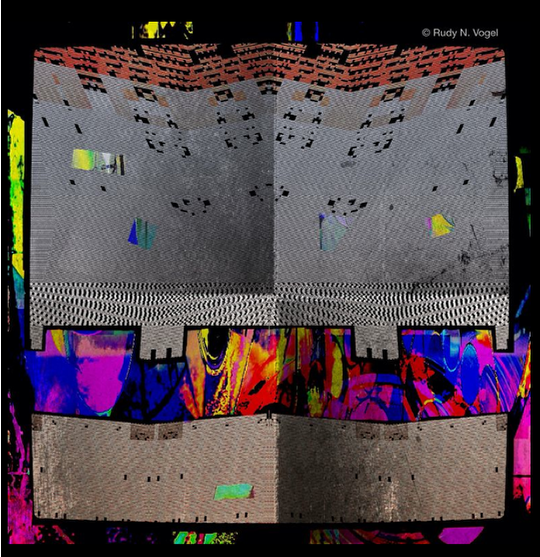
Copyright Image – Rudy Vogel ‘Bento Box’ – Apps used: Decim8, TinyPlanets, Diptic, PicGrunger, Scratchcam & Iris
JC – How do you print your work to ensure it looks its best (before submitting to a gallery or sending to a client?
RV – The ideal manner for printing my work is either through giclee or Forex prints. I have been working with Knox Bronson, founder and curator of pixelsatanexhibition.com who has significant experience in printing but I have also been working with a giclee print expert of 35 years in my community as well. Since many of pieces have depth, rough textures, and iridescence these notes are often lost in stand printing methodologies. So my colleague and I have experimented with different media such as vinyl sheeting, a special plastic coated paper and other forms to ensure that the print matches the electronically displayed piece as best as possible. Printing technology still has a little ways to go in being able to match the kinds of colorful and rich textured pieces that I create, but its getting there. That being said, I believe we are not too far away from the day when artists will be able to “print” their pieces on rollable and flat OLED displays that will be able to be mounted and framed as regular paper or other flat media. However, for now at least, I prefer for my work to be displayed on LCD flat panels.
Sizes
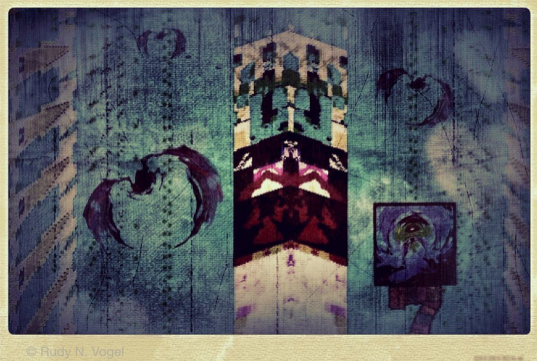
Copyright Image – Rudy Vogel – ‘Bloodsucking Commences At Tower #7′ – Apps used – Decim8, TinyPlanets, Blender, PicGrunger, Pixlromatic & Iris
JC – What sizes do you print your work at?
RV – There is no pat answer to this question. I like to print my work as large as possible since many of my pieces contain very intricate work and detail that is not readily absorbed by the viewer in a smaller plane. Typically, I like to print my pieces at a minimum size of 32” x 24” for impact.
Color Management
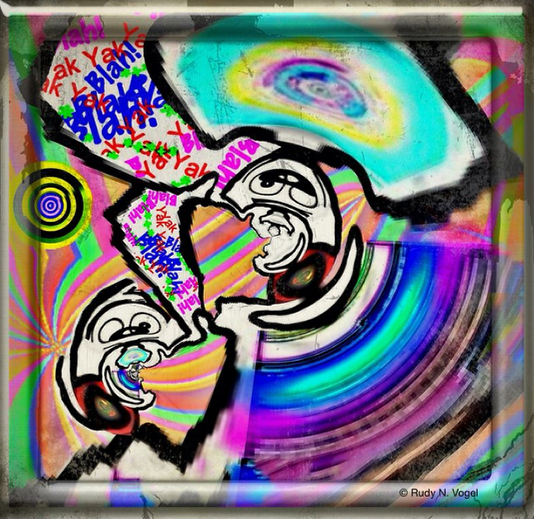
Copyright Image – Rudy Vogel – ‘Chit & Chat Are In A Spat’ – Apps used: Decim8, TinyPlanets, Blender, Picgrunger, Fontify, Scratchcam & Iris
JC – How do you ensure that your printout matches what you see on your screen?
RV – Through color matching processes, large format printer software plug-ins and visual inspection.
Quantity
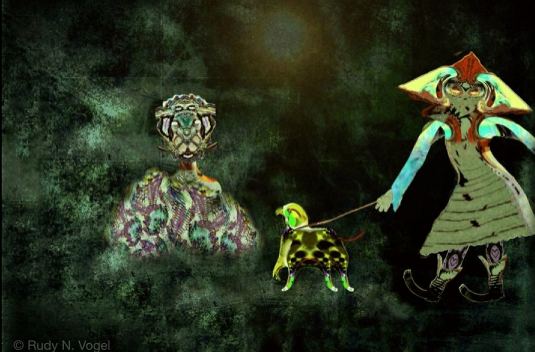
Copyright Image – Rudy Vogel – ‘Eloise Hunter And Her Stalking Tigerman’ – Apps used: Decim8, TinyPlanets, Blender, PicGrunger, Vintage, Scratchcam & Iris
JC – Do you offer multiple sizes?
RV – Typically I do not offer multiple sizes unless a collector requests it. But even then, I try to convince him/her that the print is sized in the manner that I had envisioned it to be.
Resizing
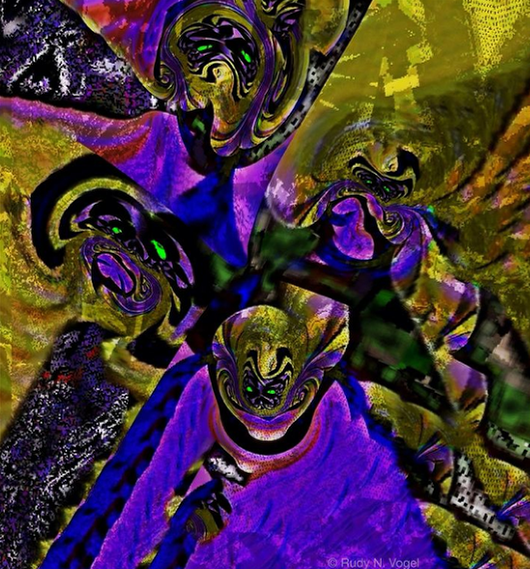
Copyright Image – Rudy Vogel – ‘Portrait Of The Ghoulish Gang Grimsly’ – Apps used: Decim8, TinyPlanets, Diptic, Blender, Touch/Retouch, iRetouch, SimplyHDR, Blender & Iris
JC – How do you resize your work?
RV – Currently, the best way to resize my work is through Photoshop. Uprezzing is naturally a built-in capability however, at times I turn to a PS plug-in called On-One Perfect Resize which used to be referred to as “Genuine Fractals” for those readers who recall this truly unique piece of software when it was released. Perfect Resize does a better than adequate job in resizing pieces, but it is important to note that when working on a piece on my iPhone, I consistently attempt to ensure that the piece is 1. Created at the highest resolution possible and 2. That I save the piece at the highest resolution possible. Another thing to remember is, that when opening the piece in Photoshop it appears either in the JPEG or PNG format. Before printing the piece in the highest quality possible, I always convert it from either of these two formats into TIFF, which automatically increases resolution, and the size of the image. There are times that prior to printing I may actually have to fiddle with the image contrast or sharpness but that is on a rare occasion.
Transportation
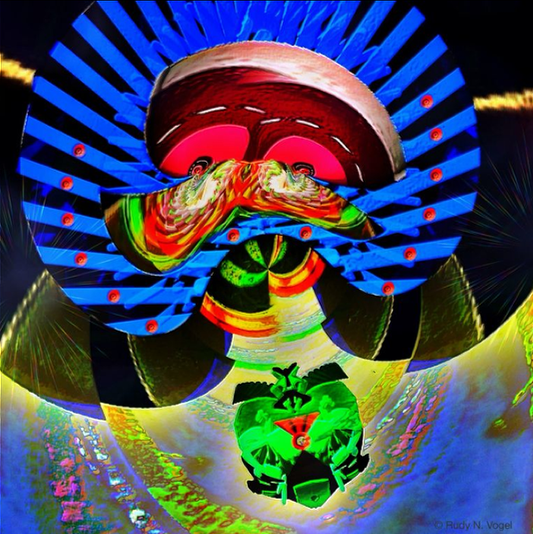
Copyright Image – Rudy Vogel – ‘The Empress Of Cyberspacian’ – Apps used: Decim8, TinyPlanets, Pictureshow, LensFlare, Blender, SimplyHDR, & Iris
JC – How do you send a purchased image to someone without it getting damaged?
RV – I am a nut about preserving the integrity of my work so I take a bit of time to ensure that the piece after it has been framed is first covered with a matte and chemical free paper, layered with plastic film and then wrapped in bubble-wrap. I then bring it to my UPS Store and pack the piece firmly in a heavy-duty box. This particular UPS Store works with art so they have expertise in packing and shipping the piece securely. I also always send it insured as a failsafe, so that the client and I are always protected from potential loss.
Workflow
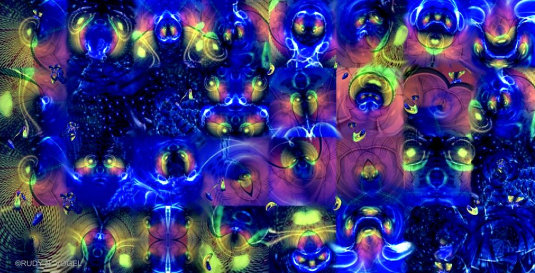
Copyright Image – Rudy Vogel – ‘Swimming In A Sea Of Galactic Wingnuts’ – Apps used: Decim8, TinyPlanets, Magic Hour, iRetouch, Juxtaposer, Blender and Iris
JC – Do you use a workflow to process images before sending or submitting them (sharpening, resizing etc)?
RV – As mentioned earlier my workflow for printing is routinely performed in Photoshop and it is best to always convert the image into TIFF for resizing and sharpening or any minute finishing that is required for color matching and appropriate sizing.
iPhone
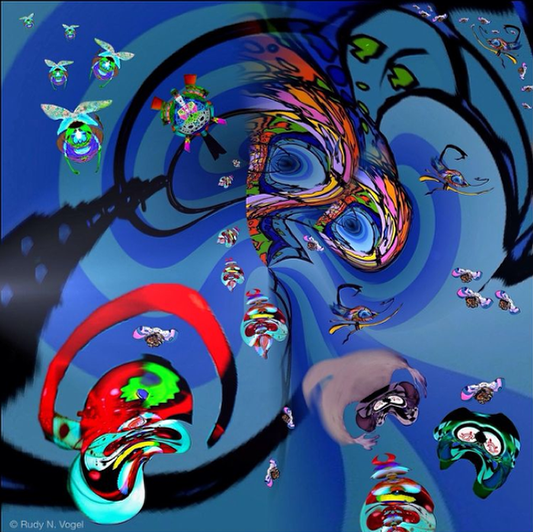
Copyright Image – Rudy Vogel – ‘Spookytown’ – Apps used: PhotoTropedelic, Decim8, TinyPlanets, Juxtaposer, Blender, Scratchcam & Iris
JC – Do most galleries allow resizing if it’s not done on the iPhone?
RV – The galleries I have worked with in the past have always been attuned to the client so, if the client wants the piece in a larger size then I will do my best to accommodate him/her. It is important to note that several times there exists a “maximum size” for any piece before pixelization begins to set-in. When that happens, the piece has to be downsized. However, I many times will convince the client that there is no need to issue a smaller version of my work for appetite’s sake. The work is printed in the size that I envision.
Copyright
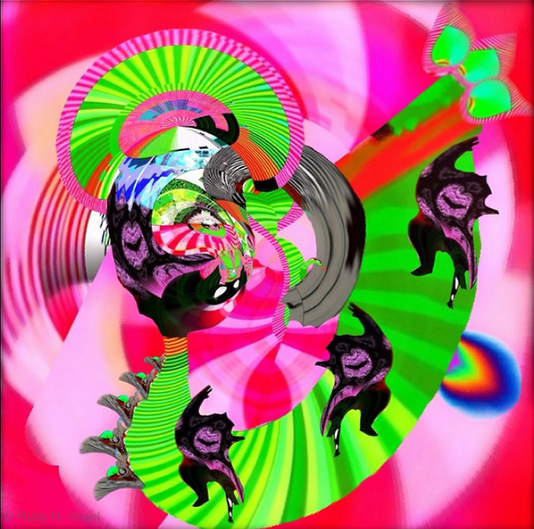
Copyright Image – Rudy Vogel – ‘Psycho Bob & His Cavalcade Of Wonderboys’ – Apps used: Decim8, TinyPlanets, Juxtaposer, Blender, SimplyHDR, Lensflare and Iris
JC – Do you add a copyright notice to your work? What program do you use?
RV – For dispersal on the various “public” sites I always mark my work on the iPhone using Impression. The final print will always have my signature.
Costs
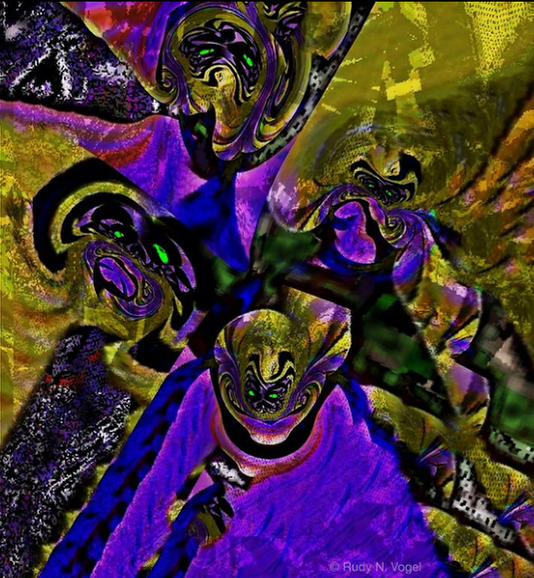
Copyright Image – Rudy Vogel – ‘Portrait Of The Ghoulish Gang Grimsly’ – Apps used: Decim8, TinyPlanets, Diptic, Blender, Touch/Retouch, iRetouch, SimplyHDR, Blender & Iris
JC – What outgoing costs to you are involved?
RV – The cost of printing, framing (although many times the client will want to frame the piece him/herself. But many times I choose a matched frame for either color offset or contrast that can enhance the visual impact of the piece. There are those times when the client insists that s/he has “that ideal wall and the room is in a certain color and I want the frame to match”: well, in that instance I typically want to please the client), packaging, freight and insurance. Depending on the gallery, these costs may be absorbed within the final price of the piece. But typically not they’re just the cost of doing business.
Profits
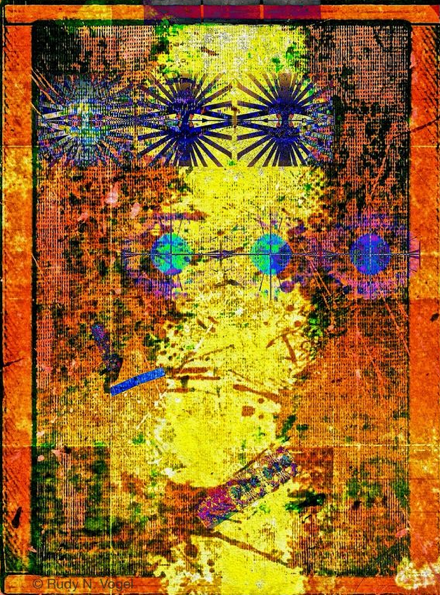
Copyright Image – Rudy Vogel – ‘Dame Hildebrand Pettibrew Smythe, Smut Slut’ – Apps used: Decim8, TinyPlanets, PicGrunger, Scratchcam, Blender & Iris
JC – What kind of ‘profit’ could I make?
RV – The answer to this question is market specific I believe. The price you can realize for a piece sold at a New York City gallery is often greater than that realized in Phoenix, as an example. So it’s important to know your market and know the price ceilings in that particular market. But art is often purchased through ‘disposable income’ and when times are challenging as they are now, you have to price accordingly. So, profit realized in this business is never a straight line it is solely dependent on your brand and the market you service.
Digital Downloads
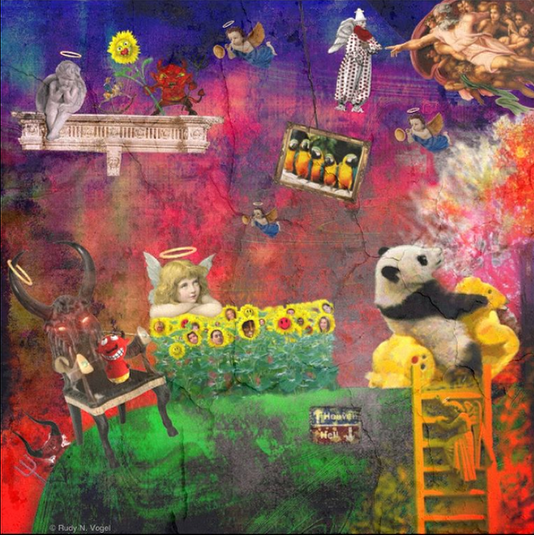
Copyright image – Rudy Vogel – ‘Is It Heaven Or Is It Hell?’ – Apps used: Evolution, Decim8, TinyPlanets, Juxtaposer, PicGrunger & Iris
JC – Do you offer digital downloads or just physical copies?
RV – I do not believe an artist should ever offer a digital download for sale. That will be the last time it is ever sold! Once posted electronically, you have to assume it will be copied at least 1,000 times. So, the artist immediately limits their upside and diminishes the collectability of their piece. When printing an ‘original’ there exists a few ways to sell multiple copies of a piece: 1. A Limited Series of, I believe, no more than 50 pieces although I prefer 25 and, 2. “Artist’s Proof” of, I believe, no more than 5 pieces although I prefer 2-3. The artist, in order to help ensure the provenance of the piece should keep detailed records of who purchased what piece and from which series, that way the market understand that there is a legitimacy to your work. Since my work is electronic in nature, I will many times print “the one piece” and it remains as ‘the original’. Such a strategy increases its ‘collectability’ and value but certainly limits the revenue the artist can realize from selling multiple pieces.
Competitions
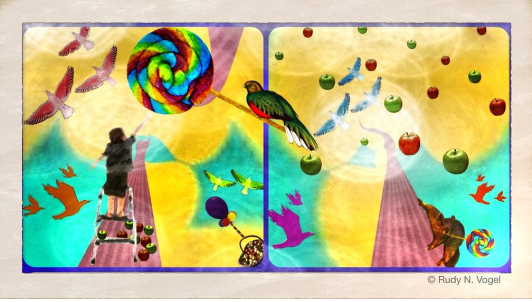
Copyright Image – Rudy Vogel – ‘Lollipops & Appledrops’ – Apps Used – Decim8, TinyPlanets, Camera+, Pictureshow, Diptic, Juxtaposer and Iris
JC – Do you submit your images to competitions or events that take place regularly, if so where?
RV – Yes I do, but not that many. I am very selective as to what I enter. I believe there should remain somewhat of an exclusivity of your work so that the perception remains that you’re not shopping yourself. Yes, I agree, it’s al about the exposure and the artist desires to be seen in as many places as possible. But there exists multiple ways of gradually increasing your exposure through targeted means other than blasting your work everywhere and paying lots of submission fees. In the end, the artist many times winds up with nothing and the originators of the competition walk away with all the loot. It’s best to carefully select your channel of awareness, promote yourself, i.e., your brand, through a carefully crafted approach utilizing social media, interviews, articles, online promotion and so on.
Social Sites
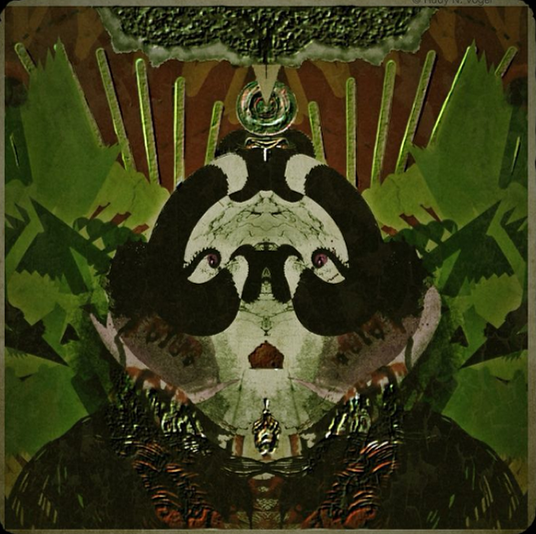
Copyright Image – Rudy Vogel – ‘The Queen Of The Solarian Empire’ – Apps used: Decim8, TinyPlanets, Pictureshow, PicGrunger, Scratchcam, Blender & Iris
JC – Do you focus on multiple social sites in order to reach a wider audience or just focus on one or two places in particular?
RV – With what I just said in mind, my online outlets are almost exclusively pixelsatanexhibiton.com and a few ‘select’ Facebook groups. I have said before, I am not a huge fan of the Flickr types since I believe they have become somewhat of dumping ground with practically no return. I also believe creating an ‘e-book’ of your work is a novel approach and Lord knows how that is going to evolve. But this is certainly an outlet that artists should continue to explore. YouTube is another way of promoting yourself create a choreographed video of your work with a soundtrack and post it for viewers to consume. You never know where that might lead….
Gallery Charges
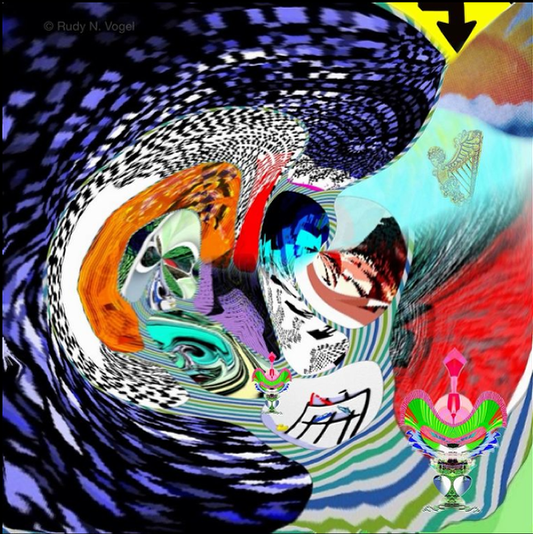
Copyright Image – Rudy Vogel ‘Chamber Of Speckled Spots & Jiggled Juju B’s’ – Apps used: Decim8, TinyPlanets, iColorama, Juxtaposer, Blender & Iris
JC – If a gallery requests a fee for submitting work, what’s the average price that’s considered fair?
RV – This one is the proverbial ‘pig in a poke’ question the problematic one! People in the know, both artists and gallerists alike believe that it is anathema to charge a “service fee” to the artist for representation. A well-known paradigm of such a malaise is the Agora Gallery in NYC. Should an unsuspecting artist take part in their ‘direct-mailed offering’, unbeknownst to s/he that does, within the “critic’s circles” that artist may have signed away their career. Such a gallery is known as a “vanity gallery” and an artist who collaborates with one will most likely never be able to “breakthrough”. If a gallery does not believe enough in your work to make a profit from their percentage than the artist should not be working with them. That being said, there are costs as discussed earlier that the gallery may assume (but typically not) that must be absorbed in the price of the piece and that may ultimately be reflected in the net profit to the artist, which varies between +/- 40-60%. However, as the artist gains more and more notoriety, his/her profit will increase.
Framing
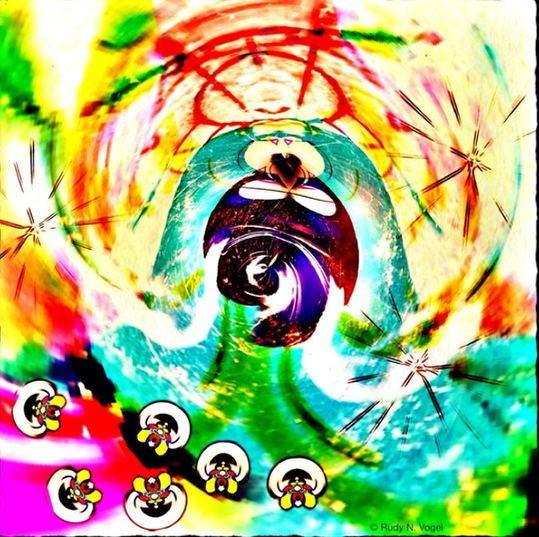
Copyright Image – Rudy Vogel – ‘Dink, The Martian Hipster & His Drones’ – Apps used: Decim8, TinyPlanets, Superimpose, Blender & Iris
JC – What’s the best way to go about framing a piece for a gallery?
RV – In my case, the framing would typically be the cost of the flat panel display. However, when a piece must be printed and sold, the quality of the framing and service provided by the gallery is truly tantamount. The paradigm I use is the experience I have from the framer I have used for the last 10+ years. Their pricing is fair, the selection of frames they carry is immense and they have a significant number of frame suppliers to choose from in case the ‘right’ color and design may not be in-stock. They also provide as an option museum quality glass, which is thicker and sturdier, but they also provide standard glass and plexi, but again this would depend on the client’s taste. I typically frame a piece without glass or plexi. But what sets them apart from the others is the attention to detail. Their corners are crisp and sharp; their corner lines are almost imperceptible; each piece is mounted properly and finished with a backing; and, each piece comes ready for hanging. The options they provide for actual mounting is nearly limitless and they can work with almost any kind of medium. So, in the end, an artist and his/her framer should have a completely symbiotic relationship and one that provides notable choices.
Artists’ Pitch
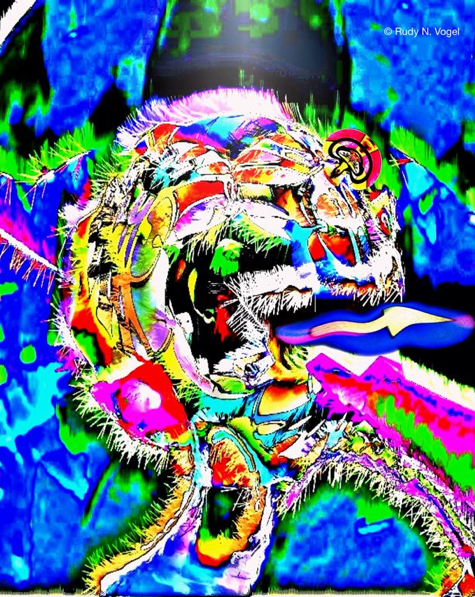
Copyright Image – ‘The Deconstruction Of Man’ – Apps used: Decim8, TinyPlanets, SimplyHDR, Dynamic Light, Lensflare, Blender & Iris
JC – How does the artist frame his/her pitch for representation to the gallery?
RV – I believe, that it is important for any emerging artist to understand that the gallery s/he chooses can be a monumental choice in the artist’s career. The gallery can many times either ‘make you or break you.’ To find that true partnership is not easy, it can be a rocky road. The gallery is the instrument for promoting, selling and developing the artists’ portfolio and many times significantly aiding in the development of their career. So, the choice of gallery is of the utmost importance to the artist. Therefore, for an artist to find such a gallery will take time and little bit of luck. But an astute and savvy artist can often times help create their own luck by doing their homework. It is important for an artist to research the galleries they would like to work with and the artist should visit those galleries and know as much about their strategic mission and slant as they do. Study their offerings; get to know their intended and real position in the art/gallery community; know as much as possible about their existing portfolio of artists and the gallery owner(s); assemble a dossier on each gallery. An artist should invest all of this effort upfront, before their pitch is even made; since the pitch and of course their art is meant to impress. If an artist intends for a gallery to rep him/her, then you need to impress them. You accomplish that goal by ensure the gallerist that you have done your homework and that by them enlisting you will be a winning combination.
Research
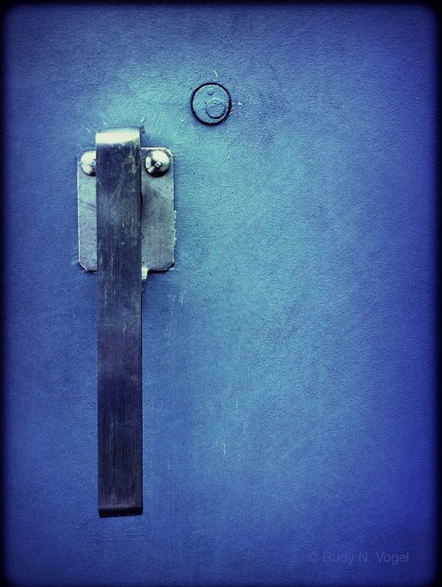
Copyright Image – Rudy Vogel – ‘Can’t Seem To Handle It Anymore’ – Apps used: Camera+, Photogene, Dynamic Light, Blender & Iris
JC – How do you research the gallery you intend to work with?
RV – Aside from site visitations, I use industry journals, magazines, blogs, web sites and conversations with other gallerists, collectors and “friends-in-the-know” as techniques for amassing my database on each of my targeted galleries. I construct a dossier on each one that I would like to have represent my art and me. But in the end, I am taking my time and being very careful about the whole process.
Self Promotion
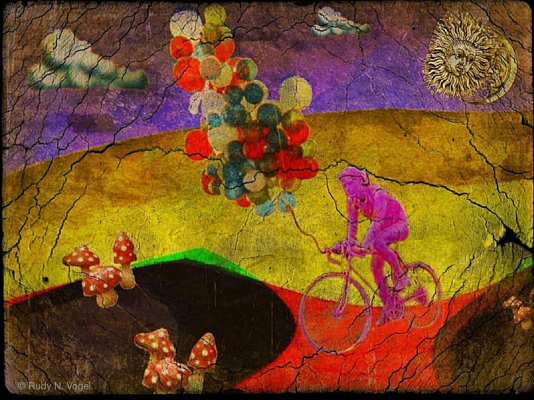
Copyright Image – Rudy Vogel – ‘Balloonocyclist’s Day In The Park’ – Apps used: Decim8, Juxtaposer, Blender, PicGrunger & Iris
JC – How do you promote yourself?
RV – I use social media as much as I can to build buzz and spread the word. Twitter is an important tool as well. Having a website to demonstrate your portfolio and abilities is a must. Using a blog is another mechanism to build interest. Investigating possibilities for publishable interviews, wherever you can, is always important since your followers and ultimately your clients are always interested in your viewpoints and intentions/philosophy within your work. People want to get to know you in a casual, engaging and many times unassuming and independent manner. Having the gallery relationship is crucial to one’s success but your brand should not be left completely up to them for development. The artist must play their role as well in developing their brand. Ultimately, when one becomes more known, the consideration of hiring a publicist should be weighted as well. But, for me, that need hasn’t arisen as of yet tomorrow it may. Who knows, maybe after this interview, they’ll be calling me…
Branding
RV – How do you consider yourself and your work as a “brand”?
JC – Every aspect of marketing today is wrapped up in brand building because it’s all about the affinity and experience one has towards something they like and feel close to. Therefore, every artist and his/her work should realize that their portfolio and they themselves are a business. And the end game of any business is about making money and being profitable. Businesses are built on the basis of providing their customers or clients with what they want and when they want it and it should always be right the first time. The same notion is true when it is applied to the artist and his/her art. You and your art are one and together, this symbiosis is a product and every product should be branded for memorable recognition and awareness. In this day and age, if an artist does somehow adhere to this philosophy then they may wind up selling some pieces here and there, but it most likely will never be a business and something they can call a career that will feed them and pay their bills and, ultimately “hit the big time.”
Links To All Apps Mentioned In This Interview
Kids Paint
8 Comments
David
This article is fantastic! Thank you, Rudy, for sharing your insights and experiences with us all. As a relative new-comer to wild, wooly world of art marketing, I have a lot to learn….reading this article helped immensely! (I’ve taken lots of notes on things to follow-up with later!)
Rudy Vogel
David, I am so very pleased that this article was of assitance to you! The best of luck in all of your endeavors!!! Best Regards, Rudy
Tracy Mitchell Griggs
Thanks for all this invaluable information – as someone who is just 9 months into creative expression in this medium, this is all very new to me – am considering the furure possibility of selling my work am will refer to your wealth of knowledge. Cheers!
Rudy Vogel
Hey Tracy! Thanks so much for your comment! I wish you all the best in teh world. You have agreat ability and I know you will exceed!! Best Regards, Rudy
iColorama
Rudy, so amazing artworks!! It is an honor to be mentioned by you, keep these color induced dreams coming! 😉
Rudy Vogel
Thanks so very much for your comment! Much appreciated!!
Geri
I love this new feature – thank you for sharing all of your information with us. (Joanne, will this feature have it’s own tab on your site or will it be under interviews?)
Joanne Carter
Hi Geri, many thanks for your kind comment. This area actually comes under our Photo App Lounge tab, it’s currently split into two, with Artists Corner and A Picture’s Worth. Take a look and let me know what you think. J